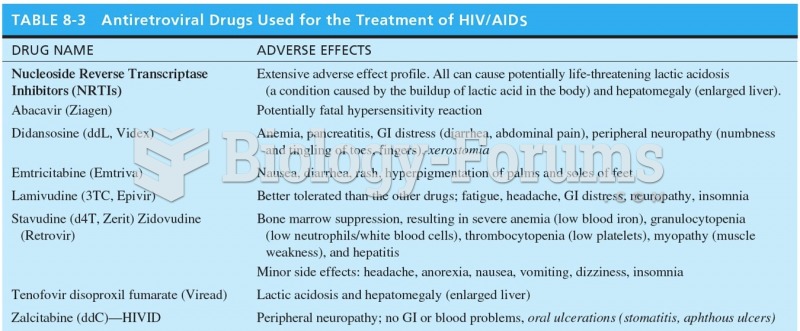Answer to Question 1
Counseling: Both one-to-one counseling and group counseling are used in prisons and by probation and parole officers. The aim is to identify the specific problems of each offender (including the reasons that motivated him or her to become involved in criminal activity) and then to develop programs for solving these problems. The inmate's needs may be extensive and numerous, including medical, psychological, and financial issues; drug use and abuse patterns; family and peer relationships; housing; education; vocational training; and employment. Attention is also given to the criminal's attitudes, motives, group and peer relationships, and rationalizations regarding criminality. The effectiveness of counselors (social workers, probation and parole officers, psychologists, vocational rehabilitation counselors) is somewhat mitigated by their dual role perception by offenders. Some inmates view them as true helpers, whereas others view them as authority figures in control of rewards and punishments. Offenders with the second perception are reluctant to discuss socially unacceptable needs and motives or to establish a close relationship for fear that information divulged will be used against them.
Prison Education: Education in prison has two objectives: (a) to give inmates formal academic training comparable to schools and (b) to resocialize inmates' attitudes and behaviors. To accomplish these objectives, prisons use TV programs, movies, libraries, lectures, classroom instruction in academic subjects (covering elementary, secondary, and sometimes even college material), religious programs, group discussions, and recreational programs. However, the bitter attitude that most inmates have toward prison and the prison administration often interferes with their accomplishing educational objectives.
Vocational Training: The objective of these programs is to give inmates a job skill suitable to their capacities that will prepare them for employment on release. The quality of such programs in institutions throughout the country varies greatly. In many prisons, vocational training is defined as the maintenance work of the institution: laundry, cooking, custodial work, minor repairs, dishwashing. For a period of time, vocational training was considered the main component of rehabilitation, but now rehabilitation is seen as covering many other areas.
Prison Labor: The idea that prisoners should perform work has always existed. Originally, labor in prisons was seen as a method of punishment. England, for example, for a long time had inmates carry a cannonball on treadmills that had a meter measuring the number of units of work produced. For each meal, inmates had to produce a certain number of units. Additional units were assigned for misconduct. Currently there are two conflicting conceptions of work: (a) it should be productive and train inmates for employment upon their release and (b) it should be hard, unpleasant, or monotonous for retributive purposes. The second view is still rationalized by some authorities as also having a reformative function; it is thought to teach discipline, obedience, and conformity and to develop an appreciation for avoiding criminal activity. Convict labor has been used for building roads, running agricultural farms, fighting fires, conducting insect control programs, doing lumber-camp work, doing laundry, making state license plates, and performing a wide variety of other tasks. Work and educational release programs in jails and in some prisons allow release of inmates during the day so they may work or attend school but be locked up in the evening.
Good Time: Good-time legislation permits a prison review board to release a prisoner early if she or he has maintained good conduct. Most good-time laws specify that, for every month of acceptable behavior, a certain number of days will be deducted from the sentence. Good-time laws are designed to make inmates responsible for their conduct, to provide an incentive for good conduct and rehabilitation efforts, and to reduce discipline problems within prisons. Indeterminate sentences, which were first established in the 1800s, have similar objectives. Many sentences are indeterminate, with a minimum and a maximum limit on the amount of time an inmate can be incarcerated. In recent years, however, a movement to return to determinate sentencing has gained considerable support.
Parole and Probation: Parole is the conditional release of a prisoner serving an indeterminate or unexpired sentence. It is granted by an administrative board (parole board) or by an executive. Parolees are considered in custody and are required to maintain acceptable conduct and avoid criminal activity. Parole is designed both to punish (certain behavior is restricted, and there is a threat of return to prison) and to treat the offender (a parole officer generally counsels and helps the parolee meet his or her needs). Probation is granted by the courts. It involves suspending the sentence of a convicted offender and giving him or her freedom during good behavior under the supervision of a probation officer. Probationers are viewed as undergoing treatment. There is, however, the threat of punishment; if the conditions of probation are violated, the offender will be sent to prison. Similar to parole, probation contains reformation and retribution components. Probation and parole officers have a dual role responsibility: a police role and a rehabilitative role. The probation and parole officer functions in the police or authority role by closely monitoring the activities of probationers and parolees to observe whether they are violating laws or violating the conditions of their parole/probation. Those being supervised are continually aware that the probation/parole officer has the authority to initiate procedures to revoke the probation/parole, which will send them to prison. Many probationers and parolees are distrustful of the criminal justice system and are therefore wary of anyone (including probation and parole officers) associated with this system. This police role conflicts at times with the second primary function of probation and parole officers: the rehabilitative role. For rehabilitation to be most effective, the counselee must trust the counselor, must feel free to reveal socially unacceptable attitudes and activities to the counselor, and must form a close working relationship with the counselor. Obviously, those probationers and parolees who view their supervising officer primarily in the police role are likely to avoid forming a counseling relationship with that person.
Answer to Question 2
The extent to which the death penalty has been used and the methods for executing offenders have varied considerably in different societies. Criminals have been hanged, electrocuted, shot, burned, gassed, drowned, boiled in oil, broken at the wheel, guillotined, stoned, put in an iron coffin, pierced with a sharp stake, stabbed with a sword, and poisoned. In essence, almost every lethal method has at one time or another been used by some society. The death penalty has been used in the United States throughout most of the country's history. In colonial America, witches in some communities were burned at the stake. While the West was being developed, individuals who stole a horse or committed certain other crimes were sometimes shot or hanged (sometimes by a lynch mob or a kangaroo court). From the time of the Civil War until the recent past, African Americans in the South who were thought to have committed a serious crime against Whites (for example, rape) were sometimes lynched. Gas chambers, firing squads, lethal injections, hangings, and electric chairs are the current methods of execution used in the United States. From 1967 to 1977, the death penalty was not used in this country, partly due to U.S. Supreme Court decisions that ruled the penalty unconstitutional. In October 1976, the Supreme Court changed its position on this issue and ruled that states may execute murderers under certain guidelines. On January 17, 1977, Gary Gilmore was the first person in a decade to be executed, and the sensational case attracted national attention. Gilmore was convicted of ruthlessly killing several people. The continued use of the death penalty remains a controversial national issue.
The primary argument for using the death penalty for certain crimes is that it is assumed to have a deterrent effect. This assumption is questionable, as statistics generally do not show a corresponding decrease in serious crime rates when a country adopts the death penalty. Also, there is no clearcut evidence that when a country discontinues use of the death penalty, there will be an increase in serious crimes. Additional arguments for use of the death penalty are that (a) some crimes (such as brutal, premeditated murder) are so abominable that the offender deserves the ultimate punishment and (b) it is less expensive to society to put hardened criminals to death than to incarcerate them for life. (In reality, executing someone is more expensive than lifetime incarceration, as huge amounts of legal expenses are incurred on the appeals that precede an execution.) Arguments against use of the death penalty are as follows: (a) it constitutes cruel and unusual punishment, being the ultimate punishment; (b) if the convicted person is later found innocent, the penalty is irreparable; (c) the eye for an eye approach is inconsistent with civilized, humanitarian ideals; (d) the right to life is a basic right that should not be infringed on; and (e) the death penalty appears to be assigned in a discriminatory manner (African Americans and Latinos are proportionately much more likely than Whites to be sentenced to death).







